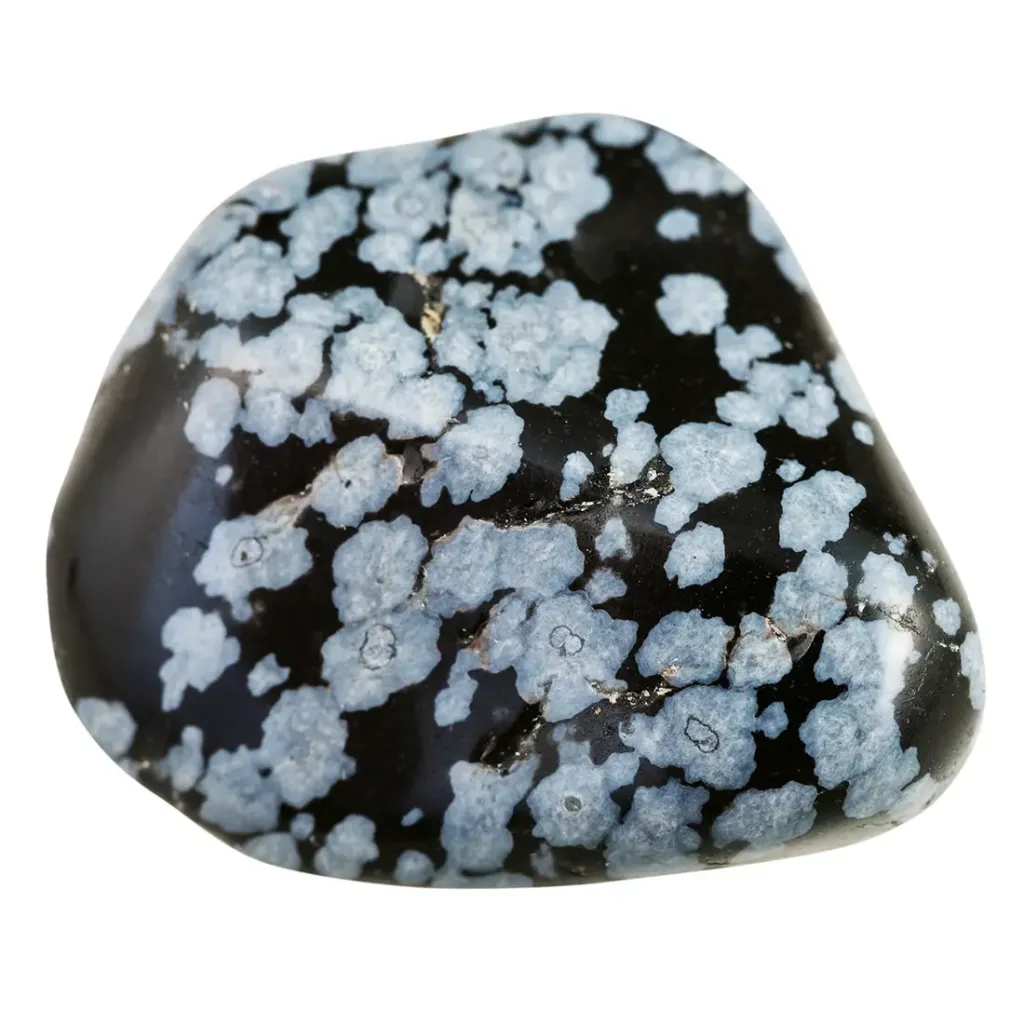
Appearance
Obsidian is typically a transparent black or dark brown color. Typically, it has hues ranging from dark to black to gray. It can also seem red, green, brown-green, yellow, and in rare cases, translucent and colorless. Trace element content and inclusion character are controlling factors for color. Hand-specimen rock typically has two hues together. These colors are a blend of brown and black.
Geographical Distribution
Because obsidian is only found in volcanic areas, obsidian outcrops can be found all across the United States, including the Mountain West, Southwest, California, Oregon, and Washington State. The Museum’s North American collections contain Native American artifacts that represent a multitude of different origins.
History
Obsidian is a very old name. Theophrastus is credited with using it for the first time around 320 BC. The English translation of Pliny the Elder’s Natural History has a few phrases discussing the volcanic glass known as obsidian (Lapis obsidianus), which was found in Ethiopia by Obsidius.
Metaphysical Properties
Some individuals think that obsidian possesses spiritual powers, such as the capacity to absorb bad energy and provide protection. It is employed in spiritual disciplines like meditation and crystal healing.

Chemical Composition
The main chemical component of obsidian is silicon dioxide (SiO2), which is also the chemical makeup of quartz. However, because obsidian cools quickly from a molten state, it takes on an entirely new structure. Obsidian is mostly composed of SiO2, with a composition of about 70–75%. Its varied colors and variants, however, can be caused by a variety of contaminants and trace elements. These contaminants may consist of:
Iron (Fe): The brown or black color of obsidian might be caused by iron impurities.
Magnesium (Mg): Some obsidian variants may have green coloring due to the presence of magnesium.
Calcium (Ca): Calcium can alter the characteristics and color of obsidian, frequently causing gray or brown tones.
These alkali metals, which can also be present and affect the characteristics of obsidian, are potassium (K) and sodium (Na).
Aluminum (Al): Another element that may have an impact on the color of obsidian is detected in trace proportions.
H2O (water): Small amounts of water may occasionally be found in obsidian; they are usually present as minute inclusions or bubbles. The characteristics and appearance of obsidian can be impacted by these water inclusions.
Types
Color Variations:
Color can be used to categorize obsidian. Typical color variations include the following:
Black Obsidian:
The type that is most common is distinguished by its rich black hue. It’s frequently utilized for jewelry, utensils, and decorative items.
Mahogany Obsidian:
This type resembles the wood grain of mahogany with its brown to reddish-brown streaks or swirls. It is utilized in ornamental products and jewelry.
Rainbow Obsidian:
Due to small mineral crystals, rainbow obsidian exhibits a range of colors including blue, green, and purple. Snowflake Obsidian is prized for its aesthetic appeal in jewelry and artwork.
Snowflake Obsidian:
Spherulites, which are tiny, spherical mineral clusters that resemble snowflakes, are found in this variety in white or gray colors. It is utilized in ornamental items and jewelry.
Another way to categories obsidian is by the types of inclusions it has:
Pumice Obsidian:
Pumice stone is another type of volcanic rock that can be found in microscopic bits within this type of obsidian. The pumice pieces can give the obsidian a rough appearance.
Magnetite or Hematite Inclusions:
Certain types of obsidian have minute crystals of hematite or magnetite, which can give the rock a magnetic or metallic sheen.
Uses
The following are some main applications for obsidian:
- Tools and Weapons: Historically, obsidian was a useful material for crafting spear points, knives, arrowheads, and cutting tools. It was perfect for these uses because of its fine edges and capacity to hold a fine edge.
- Jewelry: Obsidian is a popular material for jewelry-making because of its inherent beauty and capacity for high polish. It is frequently used for earrings, pendants, cabochons, and beads. Certain varieties, like mahogany and snowflake obsidian, are highly prized for their distinctive looks.
- Art and Sculpture: Obsidian is used by sculptors and artists to create elaborate sculptures and ornamental items. It is a desirable medium for artistic expression due to its reflecting, smooth surface and possibilities for translucent variants.
- Ornamental Objects: Obsidian is used to make ornamental items like collections, figurines, and paperweights. These items gain aesthetic value from its remarkable appearance.
- Surgical Instruments: Because of its sharpness and capacity to keep a precise edge, obsidian is used in several surgical equipment, especially for precision-oriented treatments.
- Scientific Applications: Microscopic slides in geology and petrology are made from small fragments of obsidian. These parts are studied by researchers to get insight into the volcanic processes that produced obsidian.
- Lapidary and Gem Cutting: A common substance used by lapidaries to cut and polish gemstones is obsidian. It can be an eye-catching option for gem cutting because of its organic glassy luster and distinctive patterns.
- Archaeological Research: Artifacts made of obsidian, particularly those with distinct chemical compositions, are essential for archaeological research. Archaeologists can reconstruct past trade networks and get insight into the migration patterns of prehistoric societies by analyzing obsidian artifacts.
- Decorative Inlays: Obsidian is occasionally utilized as an inlay for ornamental purposes in sculptures, furniture, and other upscale decorative objects. It may produce amazing visual effects when contrasted with other materials.
Table





